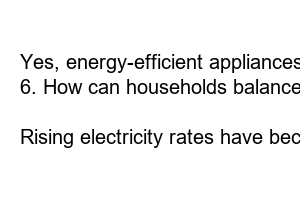전기요금 인상
Title: Brace Yourself for Rising Electricity Rates: An Inevitable Consequence
Introduction:
As the world continues to face economic challenges, one area that often leaves households with a feeling of unease is the consistent rise in electricity rates. In this blog post, we will dive into the reasons behind the incessant surge in electricity rates, its impact on your pocket, and explore ways to tackle these cost increases effectively.
1. Understanding the Root Cause:
The power industry operates on a complex interplay of factors including supply and demand, aging infrastructure, energy sources, and government policies. Such intricacies contribute to the continuous rise in electricity rates, straining the consumers’ budgets.
2. Increasing Demand:
With the advancing digital age, our reliance on technology is unwavering. An ever-increasing number of electronic devices, electric vehicles, and smart appliances drive up the demand for electricity. Meeting this demand necessitates significant investments in the energy sector.
3. Infrastructure Upgrades:
Aging power infrastructure poses a risk to the reliability and quality of electricity supply. To ensure efficient distribution and minimal power outages, utility companies need to invest in upgrading their infrastructure, an undertaking that inevitably leads to higher electricity rates.
4. Shifting Energy Sources:
The transition towards greener energy sources, such as solar and wind power, is essential for a sustainable future. However, these renewables require substantial capital investments upfront. As utility companies gradually integrate renewable energy into their systems, the transition period is often accompanied by increasing electricity costs.
5. Governing Policies:
Government policies heavily influence the energy sector. While regulations aimed at promoting renewable energy play a vital role in mitigating climate change, they may also lead to short-term rate hikes. Some policies require utility companies to purchase higher-cost renewable energy, which, in turn, may get passed on to the consumers.
6. Weather Extremes and Fuel Costs:
Agricultural activities, extreme weather events, geopolitical uncertainties, and varying fuel prices influence the cost of generating electricity. Natural disasters cause interruptions in the energy production chain, affecting supply and driving costs upward. Additionally, fluctuations in fuel prices can contribute to rate hikes.
7. Proactive Steps to Manage Rising Electricity Costs:
Understanding the reasons behind escalating electricity rates enables us to take proactive measures. By implementing energy conservation practices, using energy-efficient appliances, installing solar panels, and opting for time-of-use plans, we can minimize the impact on our budgets while embracing a greener future.
FAQs:
1. Can switching my electricity provider save me money?
Switching providers can potentially offer competitive rates and additional benefits. Explore options available in your region to find the best deal for your household.
2. Why are some regions more affected by electricity rate hikes than others?
Regional differences in infrastructure, energy sources, and governmental policies contribute to variations in electricity rate hikes across different locations.
3. Are renewable energy sources solely responsible for the increase in electricity rates?
While integrating renewable energy sources does impact electricity rates, other factors such as infrastructure upgrades and demand growth also play an important role.
4. What are time-of-use plans, and how can they help reduce electricity costs?
Time-of-use plans offer varying electricity rates based on peak and off-peak demand. By shifting energy-intensive tasks to off-peak hours, consumers can avail of lower rates, effectively managing their electricity costs.
5. Can energy-efficient appliances truly make a difference in lowering electricity bills?
Yes, energy-efficient appliances consume less electricity, subsequently reducing your household’s electricity consumption and associated costs.
6. How can households balance the need for greener energy sources and rising electricity prices?
By investing in renewable energy options like solar panels, households can generate their own electricity, reducing reliance on the grid and thereby offsetting rising electricity rates.
Summary:
Rising electricity rates have become a reality that households must navigate. Factors such as increasing demand, aging infrastructure, shifts towards renewable energy, and governmental policies all contribute to this unwelcome trend. However, by adopting energy conservation measures, using energy-efficient appliances, and exploring alternative energy sources, households can effectively manage their electricity costs while promoting sustainability. Stay informed and take proactive steps to minimize the impact on your budget, transforming this inevitability into an opportunity for positive change.

